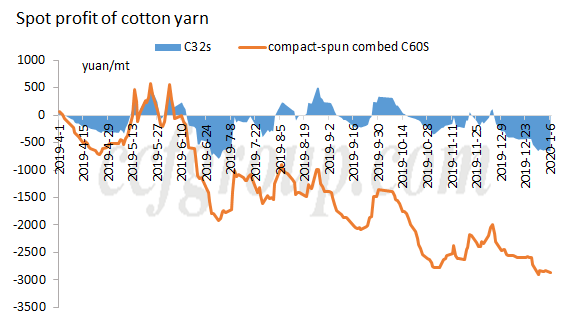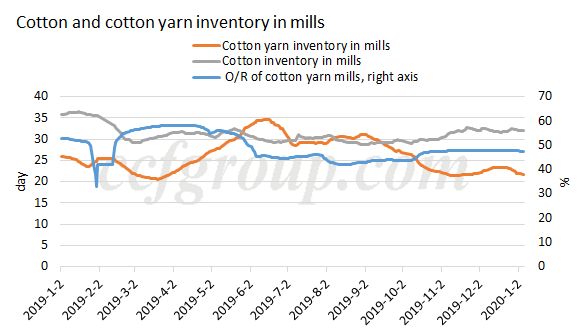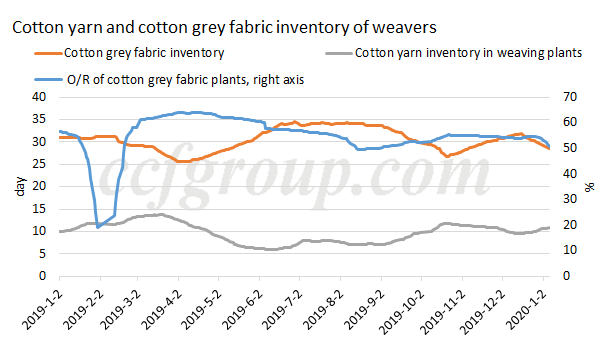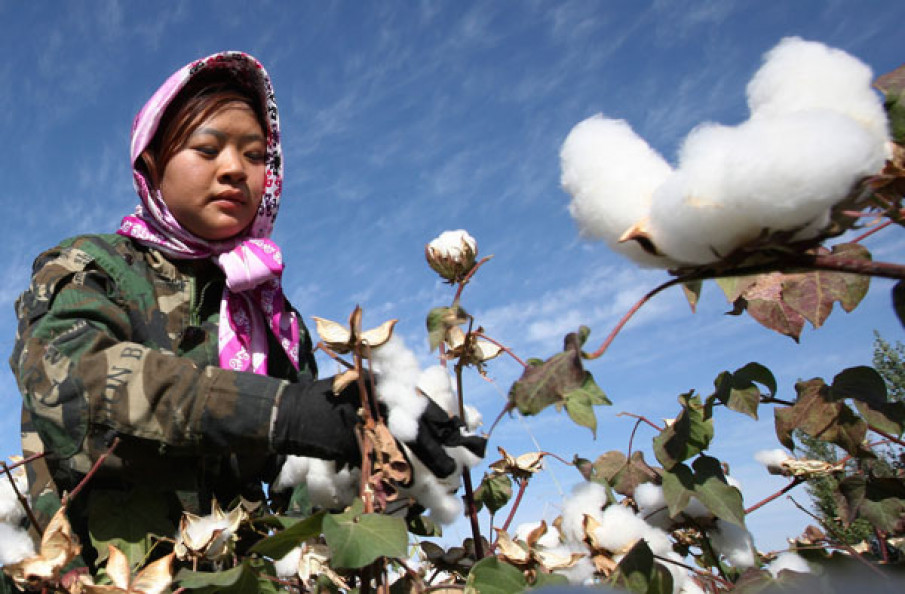On the night of Dec 13, Chinese officials say China and the US have reached agreement on the text of a phase one trade deal on the basis of equality and mutual respect, and the US will implement its promise to eliminate tariffs on Chinese goods "phase by phase". US will not levy additional tariffs on the goods due on Dec 15. China will also purchase agricultural products from US. For cotton textile industrial chain, it is really good news. Later, grey fabric orders show signs of improvement, and cotton yarn sales turn better compared to early Dec. Product inventory reduces, and market mindset recovers obviously. Mills begin to replenish feedstock for the preparation of Spring Festival holiday. Capital flows into Zhengzhou cotton futures market, leading to the surge of cotton futures. ZCE major cotton contract hit the 13,500yuan/mt, 14,000yuan/mt and 14,200yuan/mt successively. After the rise of ZCE cotton futures, how about the cotton textile industry at present?
1. Downstream demand side

From Dec 26 to Jan 3, ZCE major cotton contract, May contract, has risen by 600yuan/mt, and spot cotton prices moved up by about 350yuan/mt. Offers of cotton yarn from large mills climbed up by 500-1,000yuan/mt, while the trading prices only rose by 200yuan/mt mostly. After New Year holiday, weavers began to suspend operation for Chinese Lunar New Year holiday successively. Part of small mills has not adjusted the prices with the approaching holiday. Spot profit of cotton yarn is negative, and the deficits are larger after ZCE cotton futures move up. Under this situation, mills slow down or reduce the feedstock replenishment, and some delay to replenish after the holiday. Some mills turn to purchase upcountry cotton, but volumes are small. Therefore, after ZCE cotton futures rise, mills’ demand for feedstock reduces .

Viewed from cotton and cotton yarn inventory in mills and operating rate, mills perform flat overall. Though mills replenish some feedstock, the volumes are limited. Cotton yarn inventory reduces somewhat, but is normal. Mills remain cautious overall .

For weaving plants, they perform flat as well. Grey fabric inventory reduces somewhat, but remains high. Weavers still focus on de-stocking. | |


